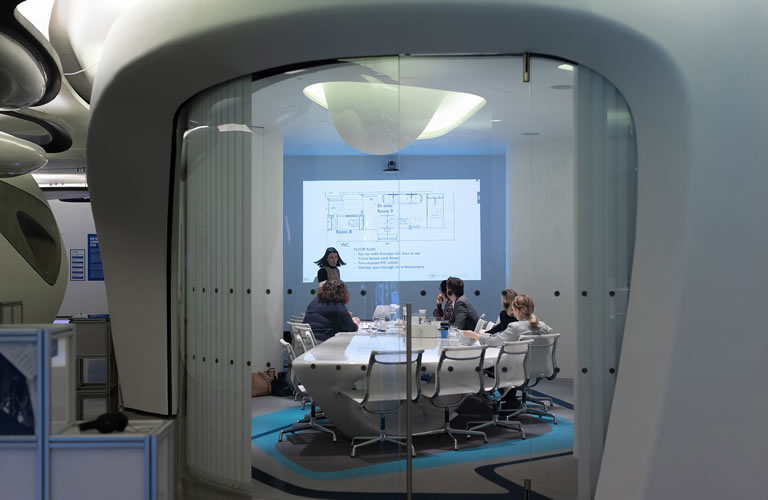We like to think that the kbbreview Retail & Design Awards are pretty special, but we would say that wouldn’t we?
However, what we know for certain is that the judging process is unique to this industry and is designed to make sure that those who won have truly earned their trophy.
We’re right in the middle of the 2019 judging stages as I type, so I thought it might be worth quickly reviewing how it all works. It’s complicated and, let’s be honest, it’s only for those who really want to understand the nuts and bolts. But, hey, if you’re interested here it is in all its glory…
Before I begin though, I will say right at the beginning that no judging system or process is perfect – if it was I could just press a button and my computer could tell me who the best retailers and designers were. This is, I believe, the best process that balances ease of entry (which facilitates lots of entries) and robustness and transparency of the judges’ evaluation.
I’m always open to constructive discussion and ideas on how it can be improved so if you’ve got any suggestions I’m ready to hear them.
So, let’s start at the beginning. We have three sets of categories – retail, design and products – so the first thing we do is put together SEVEN different judging panels.
Yes, seven.
Panel A: Retail and showroom judges
Panel B: Bathroom design judges
Panel C: Kitchen design judges
Panel D: Kitchen product judges
Panel E: Bathroom product judges
Panel F: Special Achievement judges
Panel G: Mystery Shopper judges
Let’s take each set of categories in turn and see how the judging works…
RETAIL CATEGORIES
Kitchen Retailer of the Year
Bathroom Retailer of the Year
Kitchen Showroom of the Year
Bathroom Showroom of the Year
The judging begins with a simple scoring system. The retail judging panel go through all the submitted entries and score them against these two sets of criteria:
Retailer of the Year Judging Criteria:
- Demonstrable business success
- Staff policies and training
- Marketing to target audience
- Unique ideas and initiative
- Showroom effectiveness for target audience
- Product and supplier choice target audience
Showroom of the Year Judging Criteria:
- Layout
- Effective use of available space
- Customer journey
- Displays and product choice
- Unique ideas and initiative
- Effectiveness as a sales tool
- Customer presentation area
- Housekeeping
At the end of the scoring stage – which the judges do independently of each other – we add them all up and the four with the highest scores in each category become our shortlist. It’s worth pointing out that, in the case of previous winners or finalists, judges are specifically guided to only judge on what the business or showroom has achieved in the 12 months since the last awards.
Next comes the stage that’s unique to the kbbreview Retail & Design Awards. It’s incredibly difficult to choose a winner based entirely on a written submission and we’ve always felt that to truly understand a business or showroom, you have to go and see it.
So we send the judges out across the UK and Ireland to visit each of the finalists to meet them, get to know them and quiz them on all aspects of the criteria.
Only when all the visits are complete do the judges decide who wins.
DESIGN CATEGORIES
Kitchen Designer of the Year: project cost over £50,000
Kitchen Designer of the Year: project cost £30,000 – £50,000
Kitchen Designer of the Year: project cost up to £30,000
Bathroom Designer of the Year: project cost over £25,000
Bathroom Designer of the Year: project cost £10,000 – £25,000
Bathroom Designer of the Year: project cost up to £10,000
As I’ve said, we actually have TWO separate design judging panels running independently of each other – one for kitchen and one for bathroom. They are each made up of experts in that field and, like the retail panel, they begin by going through all the submitted entries and scoring them against these fixed criteria:
Designer of the Year Judging Criteria
- Aesthetics
- Meeting and exceeding the brief
- Problem solving
- Product and material choice
- Unique ideas and initiative
- Value for money
Again, like the retail categories, all the scores are added together and the top four in each category make up the shortlist.
Then comes stage two – the presentations. All the shortlisted designers are invited to a dedicated judging day where they are each given 15 minutes to present their project in person to the judging panel. It’s their chance to give all the detail and tell the full story of the design, but likewise it’s the judge’s chance to quiz them on all aspects of the project before deciding who the winners are.
The one question that always arises in the design judging is how we define ‘project cost’. No two design projects are the same so the definition we use is ‘the final cost paid to you by the client’. That cost may or may not include all aspects of the completed kitchen or bathroom but they do include the aspects that the designer had control over. So, for example, you may get two kitchens with a project cost of £29,000 but one includes building work, installation and appliances and the other did not.
On the entry form, the designer must declare the project cost AND what is or isn’t included in that figure. It’s then up to the judges to take those factors into account when making their decisions. This is a design competition, it’s not an audit, so we must take all the figures presented to us at face value, however there is no advantage to be had by manipulating the costs to push it into one category over another.
PRODUCT CATEGORIES
Kitchen Product Innovation of the Year
Bathroom Product Innovation of the Year
We’ve changed how we judge these categories this year. Previously, the finalists and winners have been chosen by a panel made up of the editorial teams of kbbreview and Kitchens Bedrooms & Bathrooms magazines.
However, for 2019, we decided that those best placed to judge the best products of the year are the independent retailers who sell them.
So, we have two panels – one of kitchen retailers and one of bathroom retailers. They score all the submitted entries against these criteria:
Product Innovation of the Year Judging Criteria
- Aesthetics
- Saleability
- Innovation
- Material choice
- Value for money
- Detail
We add all the scores up and the top ten in each category go through as the shortlist. And then, as with all the judging in the kbbreview Retail & Design Awards now, there is a second stage.
We open up the shortlist to a carefully-controlled online vote sent to the entire retailer database of kbbreview. There is only one vote allowed per ISP address and only retailers who sell kitchens receive the kitchen vote and likewise for bathrooms. For those retailers who have told us they sell both, we split the pot in two and one half gets the kitchen vote and the other bathroom.
SPECIAL ACHIEVEMENT AWARD
If you’re the leading awards event in the industry, it’s absolutely correct that we should take the opportunity every year to acknowledge the overall contribution of an individual, team or organisation.
The recipients are chosen by the editorial team of kbbreview and it’s actually the only award where I participate in a judging capacity.
The only criteria we use is to remember it is a ‘Special Achievement’ award and not necessarily a ‘Lifetime Achievement’ award. This means that while individuals have received the trophy for their contribution over many years, equally milestones such as the establishment of the kitchen design degree course, have been celebrated too.
CUSTOMER SERVICE
Kitchen Customer Service of the Year
Bathroom Customer Service of the Year
These two categories are unique to the kbbreview Retail & Design Awards as they are an extension of one of our most popular monthly features – Shopping Around.
Our famous Mystery Shoppers visit six showrooms in a different UK town or city every month and at the end of the year they pick their favourite four kitchen retailers and four bathroom retailers. This makes up the shortlist, and the Mystery Shoppers then pick their overall winner in each category.
What I love about the Customer Service categories is that the finalists don’t know they’re even in the running until we tell them. They don’t ‘enter the awards’ in the traditional sense and often it means retailers who would never even think about entering can get involved in the event.
THE EVENT
So that’s the judging in all its nitty gritty details. It’s all worth it though as when the gold envelope is opened on the night and the winner’s name revealed it is a magical moment for them. All the finalists receive FREE tickets to the event, which means we give away over £30,000 worth of seats to make sure they are all able to be there to experience their big moment.
If you want to make sure you’re there too to enjoy the industry’s biggest event of the year with them, then it’s on April 4th at the Victoria Warehouse in Manchester.
You can book your seats or tables at www.kbbreview.com/awards




